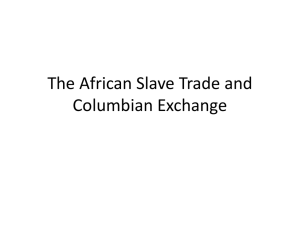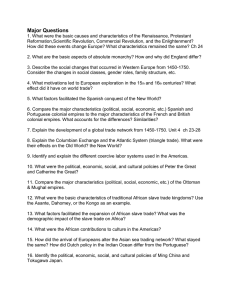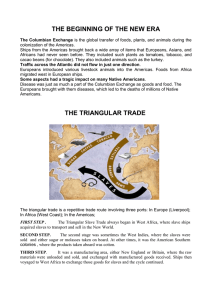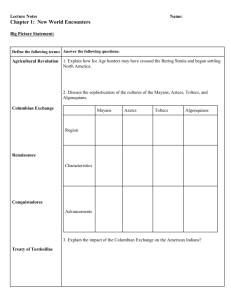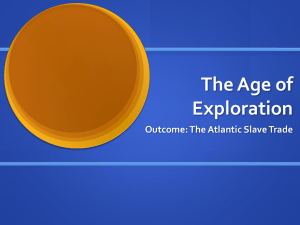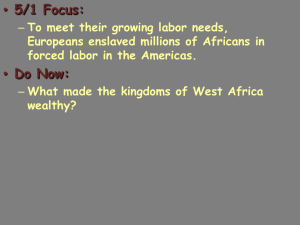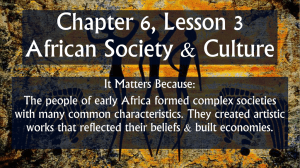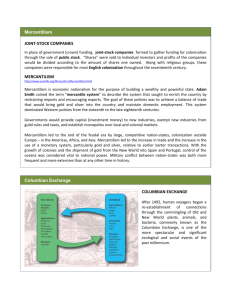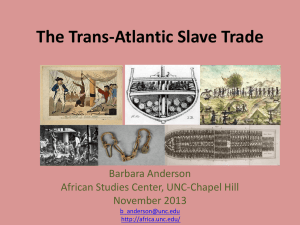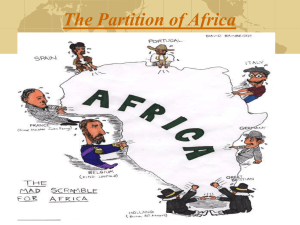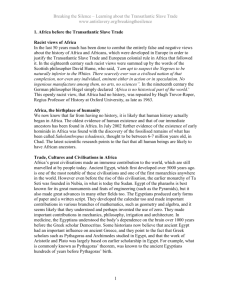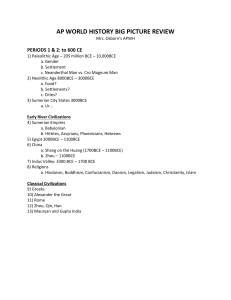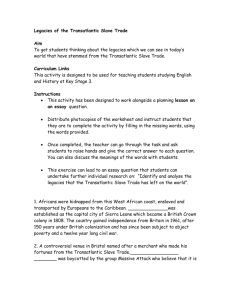Population of the Earth: 1450-1750
advertisement
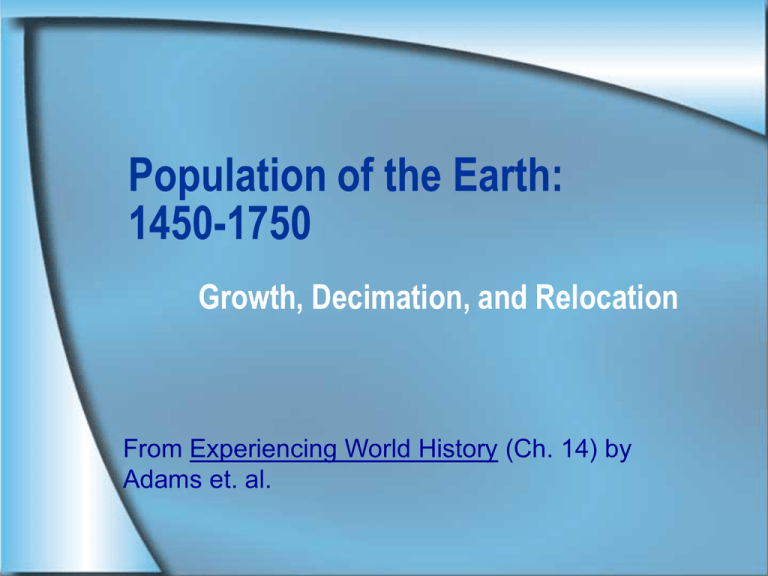
Population of the Earth: 1450-1750 Growth, Decimation, and Relocation From Experiencing World History (Ch. 14) by Adams et. al. Introduction 2 phenomena: increase in Eurasian population expansion across world oceans Population expansion in Eurasia China Russia Old World diseases travel to New World How do we know? The Atlantic Crossings: Frontiers by Sea First population change came from commercial goals that spread diseases Small group of investors sent small # of sailors Gaunche of the Canary Islands Virgin soil epidemics African slave trade The Columbian Exchange Columbus’ voyage - - > biological invasion 90% of native Americans died during 1st century of contact with Europeans & Africans No crowd diseases No animal diseases The Columbian Exchange Columbian Exchange: concept historians use to explain what happened when Western civ. reached into the Atlantic and the Americas Plants, animals, diseases, insects, pests, weeds, people Transform society and ecosystem of the Americas 1493 influenza Brutal Spanish men 1518 Smallpox (brought by West African slaves; spread from Newfoundland to Brazil) Plantation Complex 1550 - plantations were in operation Many killed by Disease Violence Slavery Reduced fertility Increase in suicides, infanticides Overgrazing Demographic void by natives filled by Africans African diseases: yellow fever, deadly malaria African Migration In 1600, the Caribbean had @ 80,000 persons compares to 6,000,000 in 1492 High African/European/Native American mortality Mixed-parentage descendents became acclimated to the conditions (mestizos) 95 % of Africans go to the Caribbean & South America; 5% go to North America Other Population Retreats Sub-Saharan Africa - - > new crops increased population; slave trade decreased population (slave ships, warfare) = no population growth Australia/Pacific Oceania - - > late 1700s; decimated by disease Asians exported as indentured servants Population Revolutions: Impacts on China China Population gains - - > inadequate food supply 16th C. epidemics Ming unity and peace - - > population increase New American foods (maize, peanut, sweet potato) E. 1600s 1/3 of population lost Climate change Political disintegration 1700 population triples Early marriage Reduction in death rates Climate shifts Improved hygiene Use of herbal drugs Population Revolutions: Impacts on Europe Population stability in 1650s Unlike China Family system – late marriages Resisted introduction on American foods 1475-1620 - - > 50% population gain Urbanization Agricultural Revolution - - > more livestock feed; increased soil fertility; cultivation Increased need to agriculture labor Introduction of corn & potatoes Lower infant death rate Asia India: Southeast Asia cooling trend - - > reduced participation Diseases Agriculture and trade Comparatively low growth b/c of fertility Women restricted third children Warfare Japan Cooling trend Decreased warfare
